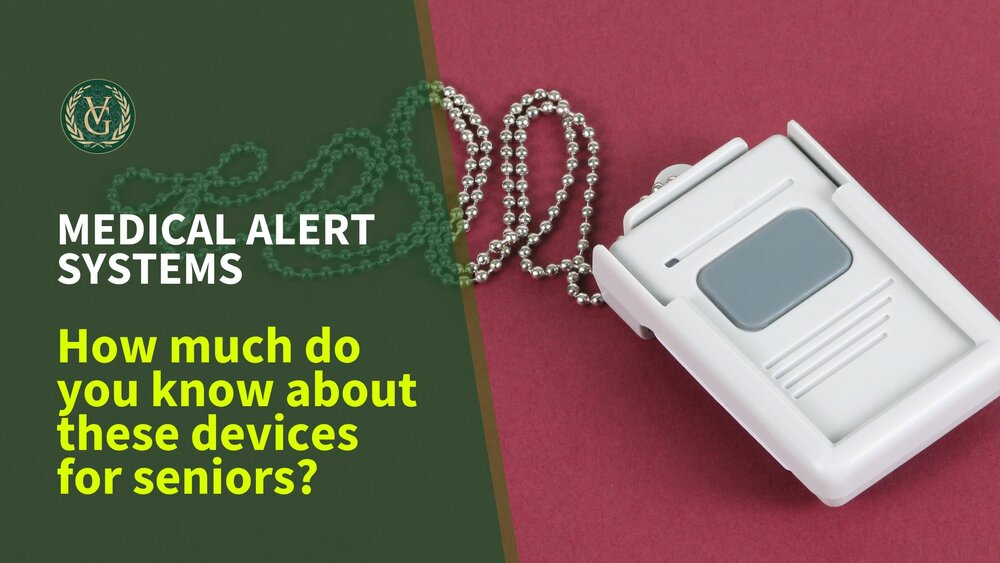How Much Do You Know About Medical Alert Systems for Seniors?
A medical alert system is one of the best investments you can make for the safety and security of an aging loved one.
Falls are a leading cause of injury among older adults, with one in four seniors experiencing a fall each year, according to the Centers for Disease Control and Prevention (CDC). Falls can lead to serious complications and even loss of life. Having immediate access to help can make a critical difference in outcomes.
Medical alert systems are game changers in the prevention of further injury or delay in treatment after a fall or other medical emergency. Providers offer a wide range of devices with differing capabilities at countless price points, making it challenging to find the right system. In this article, we will explore the ins and outs of these life-saving devices so you can make the best decision for yourself or a senior loved one.
What is a medical alert system?
Essentially, this device makes it easy to get immediate help with the push of a button. Its primary benefits include:
- Instant 24x7 connection: Pressing the medical alert button connects users to an emergency response agent at any time of day or night. They can communicate via a base station or wearable device, depending on the system.
- Personalized assistance: Agents have access to the user’s medical file and emergency contacts, allowing them to quickly coordinate help, whether from family, friends, or emergency services.
- Faster and easier than a phone call: While a cell phone could be used in an emergency, medical alert systems are simpler and more immediate. There’s no need to search contacts or dial the phone—just press the button.
- Automatic fall detection is an option: Some systems automatically place a call if a fall is detected, without the need to press the button.
- Always accessible: Medical alert systems are lightweight and designed to be worn at all times, even where there may not be access to a phone, such as the shower.
- Peace of mind: Users and loved ones can feel confident knowing that help is always just a button press away. The system offers reassurance that emergency assistance can be quickly accessed, even in moments of distress or when a phone is out of reach.
A variety of service options is available.
Here’s a brief overview of the different types of systems and accessories to consider:
- In-home base stations: Base stations include an emergency button and two-way voice communication that can be connected to a landline or cell phone. They need to be plugged into a power outlet, but many also have a backup battery in the event of a power outage.
- On-the-go devices: These all-in-one devices feature an emergency button and a two-way speaker. They’re small and lightweight, and can be worn around the neck or wrist, or clipped to a belt so they are always accessible.
- Smartwatches: In addition to emergency services, smartwatches also offer other capabilities, like health monitoring, location information, and more, depending on the watch you choose.
- Waterproof help buttons: These help buttons are compatible with in-home base stations and some on-the-go devices. Worn around the neck or wrist, they are designed to be used in the bathtub or shower, where many falls occur. The waterproof feature ensures that the device remains functional even in wet conditions.
- Fall detection buttons: Traditional medical alerts do not include fall detection. If you want your button to automatically detect a fall and place a call on your behalf, you’ll need a separate fall detection button. Most on-the-go systems offer built-in fall detection capabilities that can be activated for an extra charge.
- Lockboxes: Most medical alert system companies offer lockboxes so a house key can be placed inside. When emergency services arrive, they can enter the residence without breaking a window or damaging the door.
The features matter.
Medical alert features and functions vary widely. According to AARP, here are seven questions you should ask before you purchase a system:
- What is the battery life and charging process? Make sure understand how to charge the battery and how you will know when it’s low.
- Is it waterproof? Falls often happen in the shower and bath, so this feature is essential.
- Is it wearable? Ensure the device you find comfortable and easy to wear so that you will be encouraged to use it regularly.
- What’s the range? It’s important to know how far the wearable help device can be from the base unit and still operate. Look for one that can reach across the entire living space of the home and the surrounding outdoor area.
- Can others connect via the device? Some systems allow family members to access the system through a monitoring app on a smartphone or computer.
- Is the speaker loud enough and can the volume be raised? Make sure those who may need to contact you or your loved one from the response center can be heard.
- Is the system movable? Not all providers offer nationwide service, so ask if the system can move with you or your loved one, if needed.
Investing in a medical alert system is an important step in ensuring the safety and well-being of older adults. If you have questions about these devices or need additional resources, we are here to help. Please reach out to our caring professionals anytime.
About Vaughn Greene Funeral Services: For more than 25 years, Vaughn Greene Funeral Services has been providing a ministry of care to Baltimore’s African American community. As a leading local, minority- and family-owned provider, we promise to provide our highest level of service and respect to families who entrust us to honor their loved ones. For more information about our funeral, cremation, memorial, repast, and grief counseling services, please call us at 410.655.0015 or visit us online at https://vaughncgreene.com/.











Comments